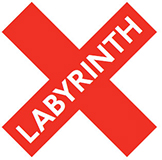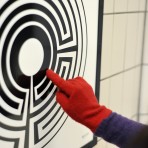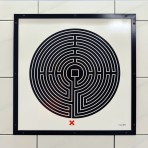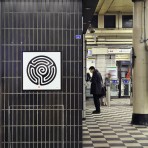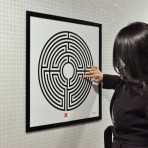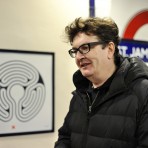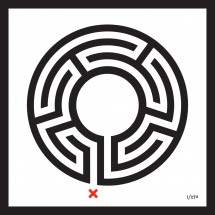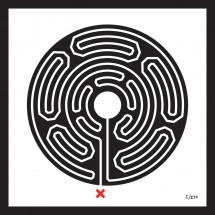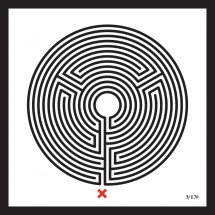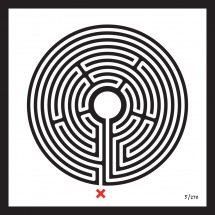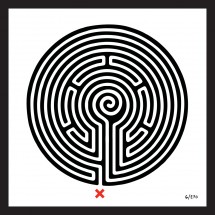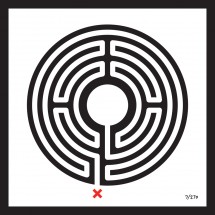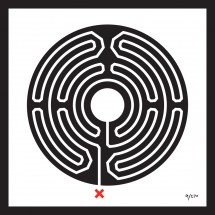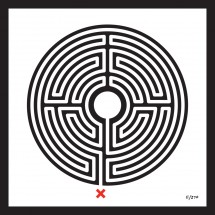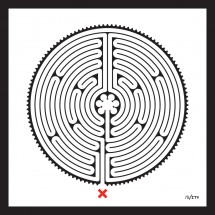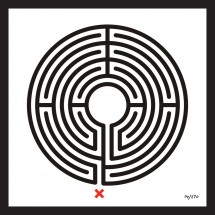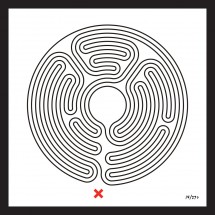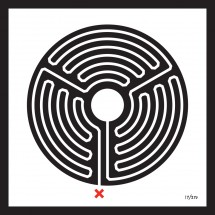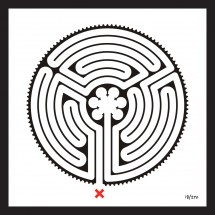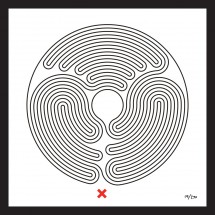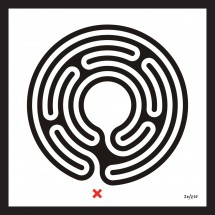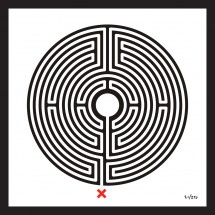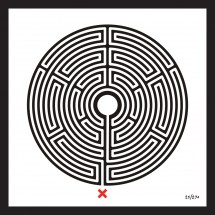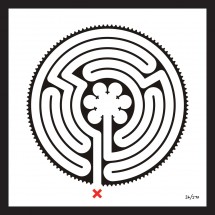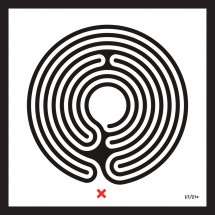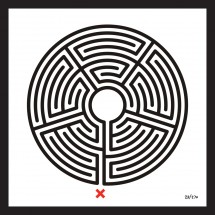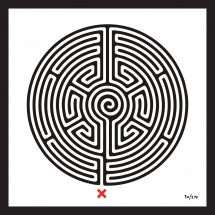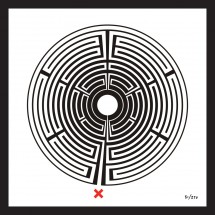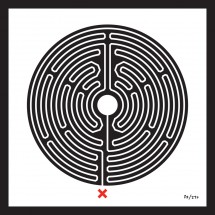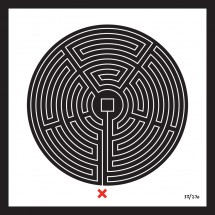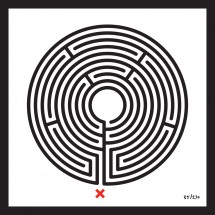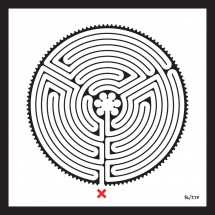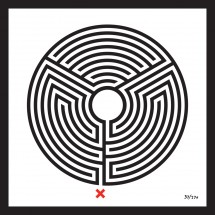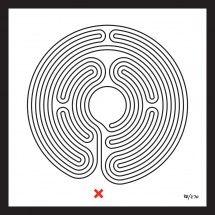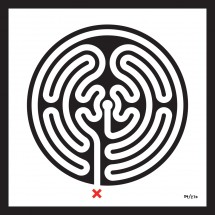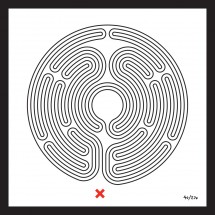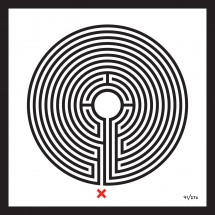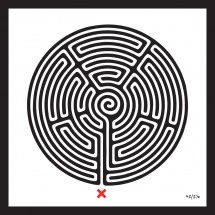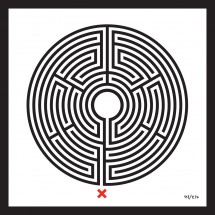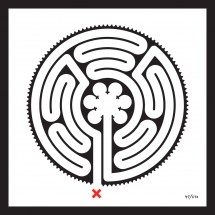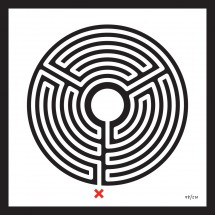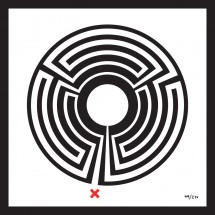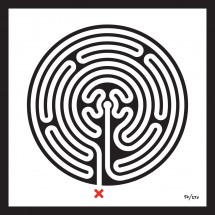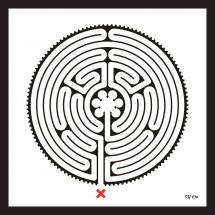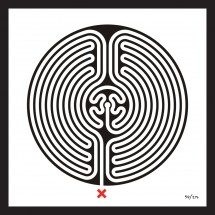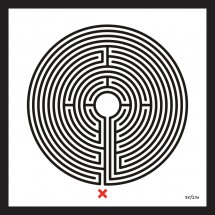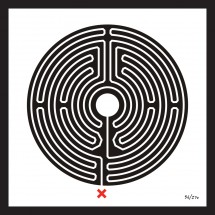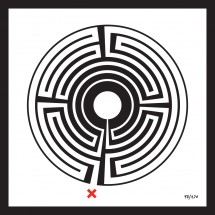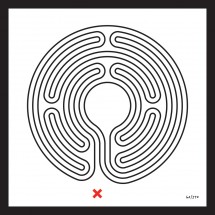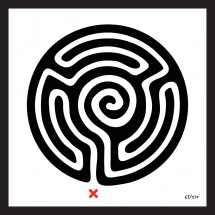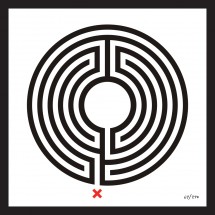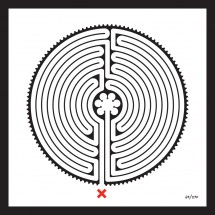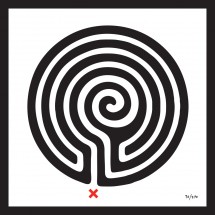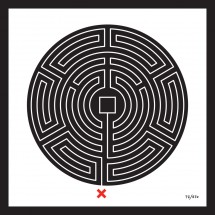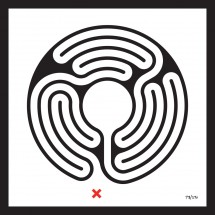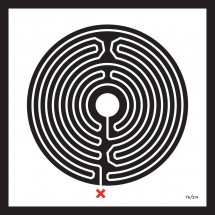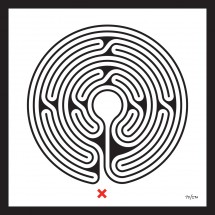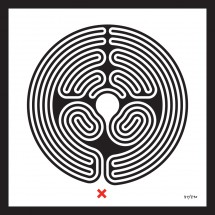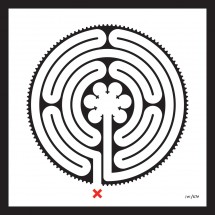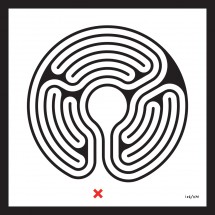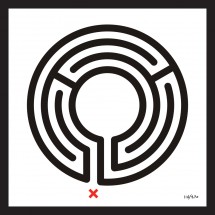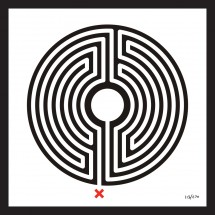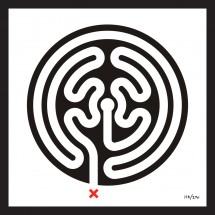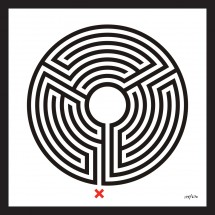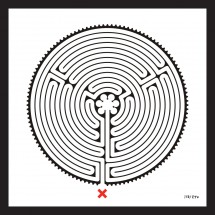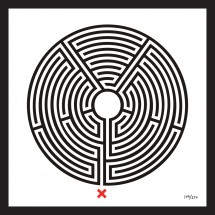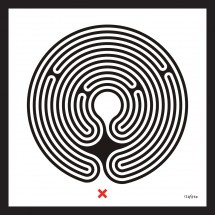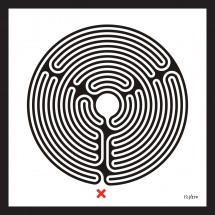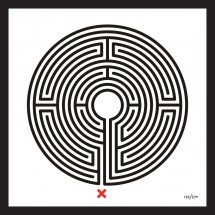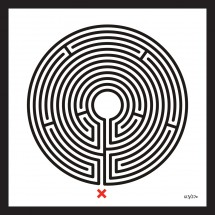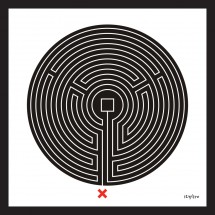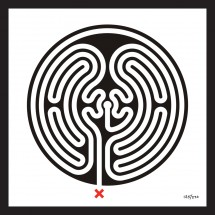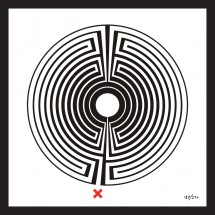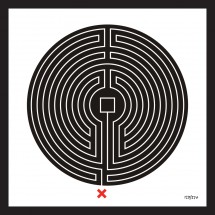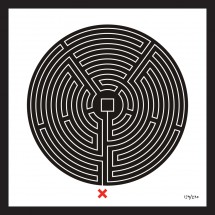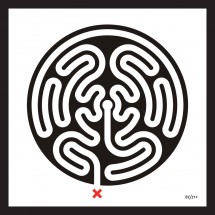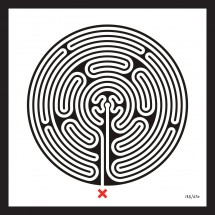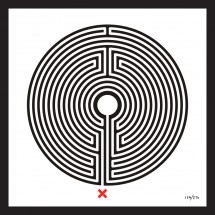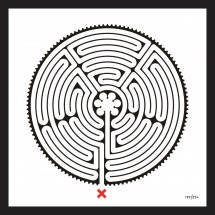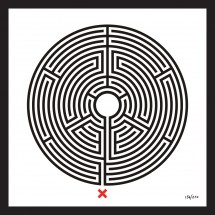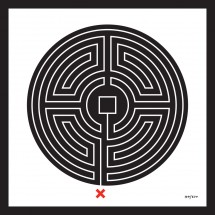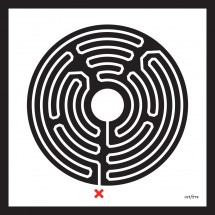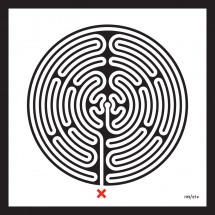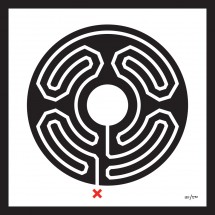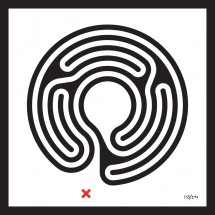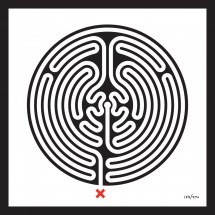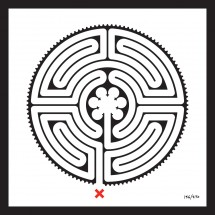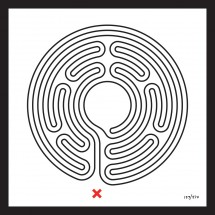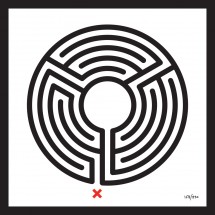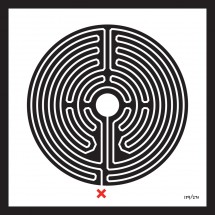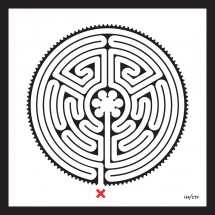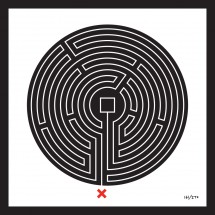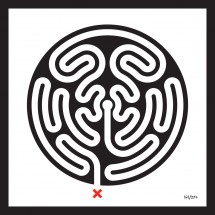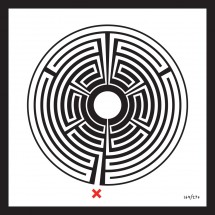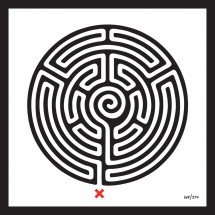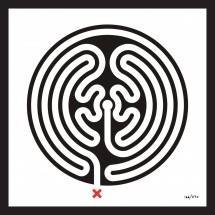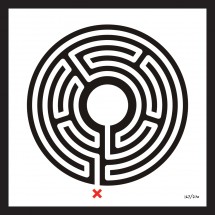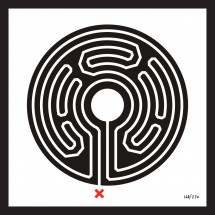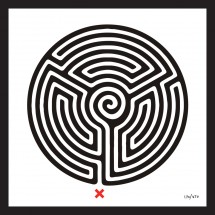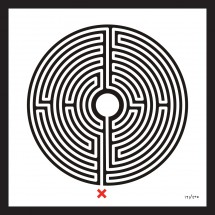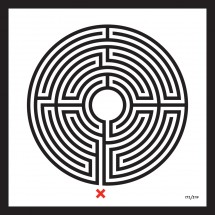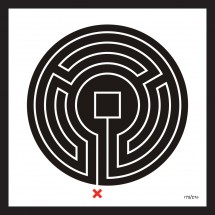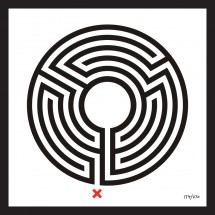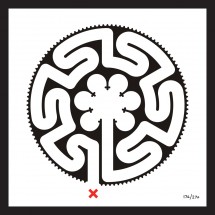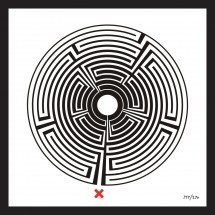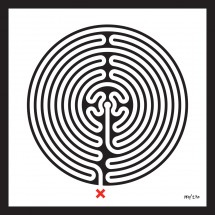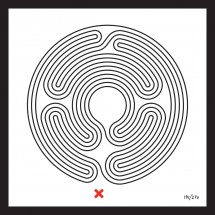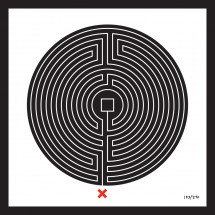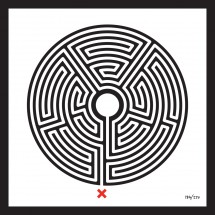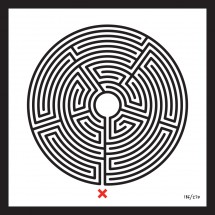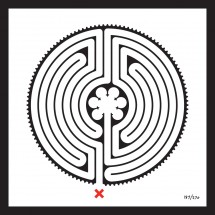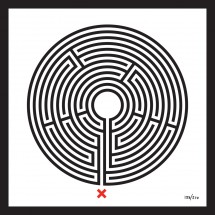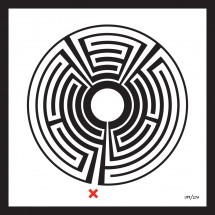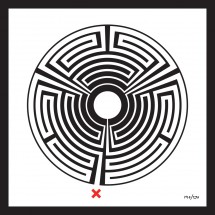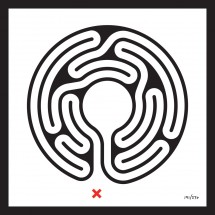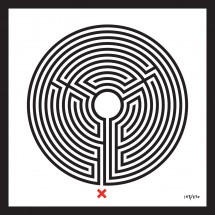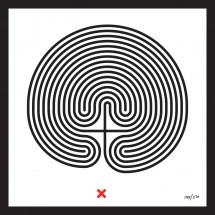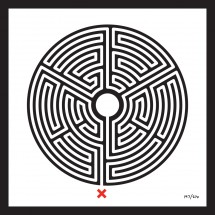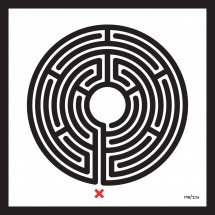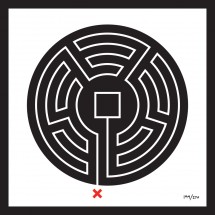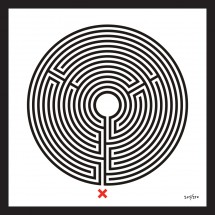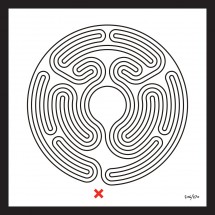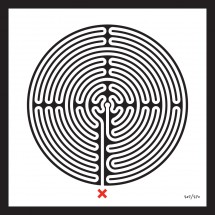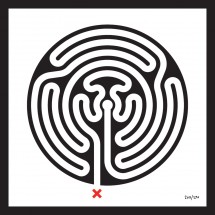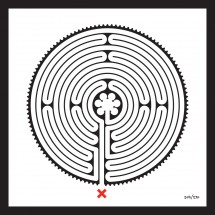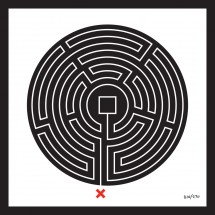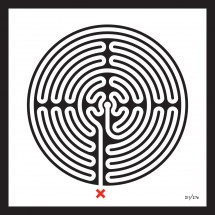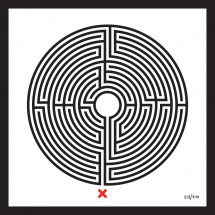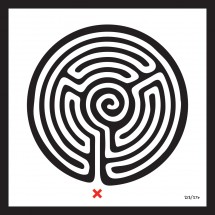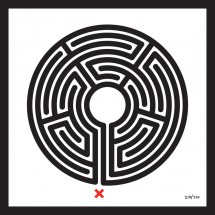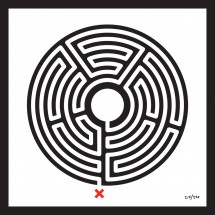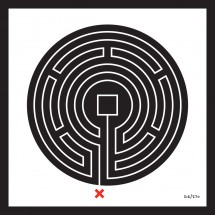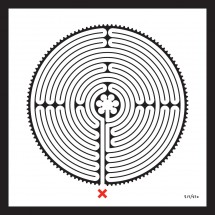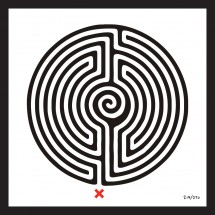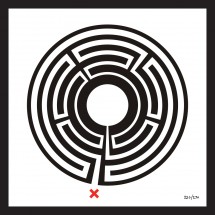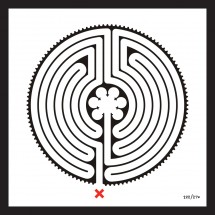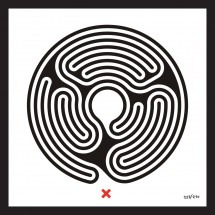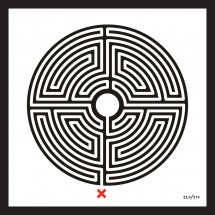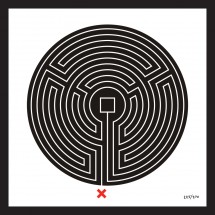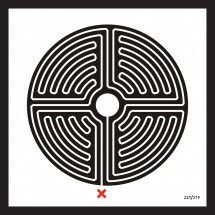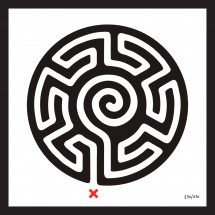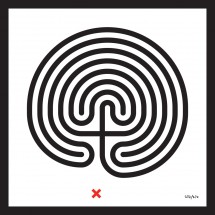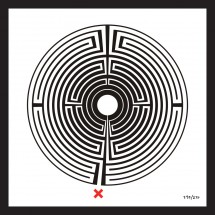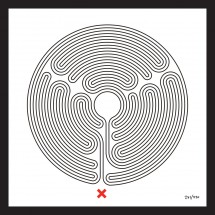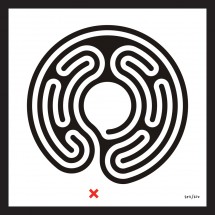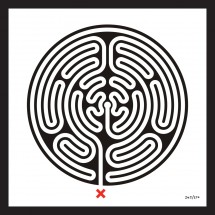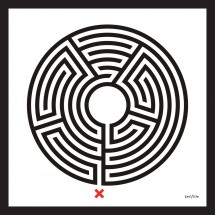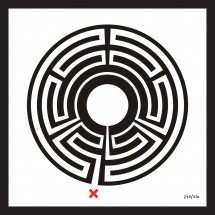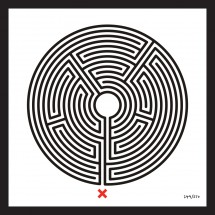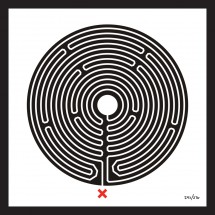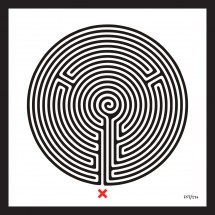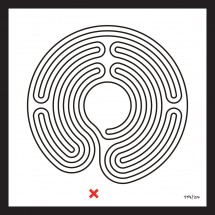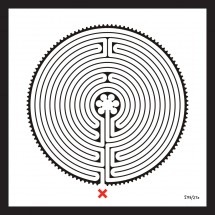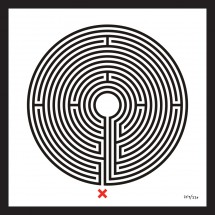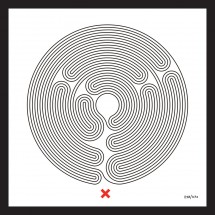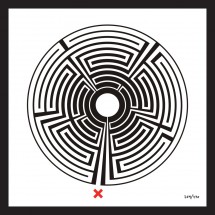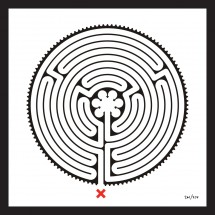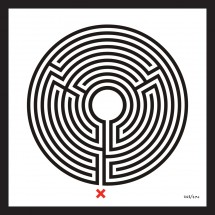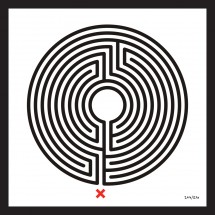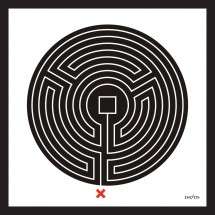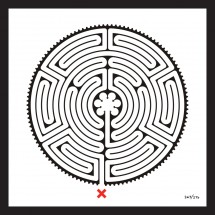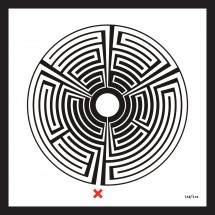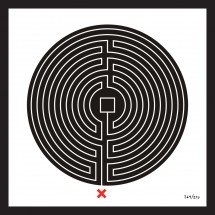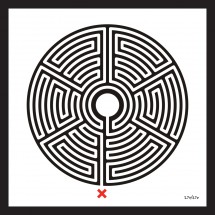About Labyrinth by Mark Wallinger
Watch Mark Wallinger's introduction to Labyrinth
Mark Wallinger, one of the UK’s leading contemporary artists, has created a major new artwork for London Underground to celebrate its 150th anniversary. The result, commissioned by Art on the Underground, is a multi-part work on a huge scale that will be installed in every one of the Tube’s 270 stations. Wallinger sees the commission as a unique opportunity to explore the potential of the Underground as a whole. Wishing to forge a poetic link with the Tube’s rich history of graphic language, he has made a work that sits comfortably alongside the two of its major design icons, the roundel and Harry Beck’s Tube map, and yet stands out as a new symbol marking the Tube’s 150th year.
Wallinger explores a diverse range of subjects in his practice, from the historic and mythic to the biographical and contemporary, resulting in works that are layered with rich cultural references for the viewer to discover. The Underground has been the inspiration and location for two of his previous works, Angel 1997 and When Parallel Lines Meet at Infinity 1998/2001, filmed on the Circle line.
The rumble of trains was a reassuring presence in Wallinger’s childhood, with the Central line running close by his family home in Chigwell, Essex. The Tube provided him with a connection from the countryside to the complexities and possibilities of the metropolis. This personal relationship with the Underground has informed his interest in public transport and fuelled a fascination with the idea of being ‘transported’ in an imaginative or spiritual sense. This idea gave rise to the ancient symbol that lies at the heart of this commission: the labyrinth, which represents this idea of the spiritual journey in many different traditions across the globe. An example of a significant labyrinth from the 13th century can be seen today on the floor of Chartres Cathedral, where visitors are invited to walk its circuitous path as a form of pilgrimage. For Wallinger, the labyrinth is a fitting analogy for the millions of journeys that are made across the Tube network every day.
Wallinger has created 270 individual artworks, one for each station on the network, each one bearing its own unique circular labyrinth, but with a graphic language common to all. Rendered in bold black, white and red graphics, the artworks are produced in vitreous enamel, a material used for signs throughout London Underground, including the Tube’s roundel logo, whose circular nature the labyrinth design also echoes. Positioned at the entrance of each labyrinth is a red X. This simple mark, drawing on the language of maps, is a cue to enter the pathway. The tactile quality of the artwork’s surface invites the viewer to trace the route with a finger, and to understand the labyrinth as a single meandering path into the centre and back out again – a route reminiscent of the Tube traveller’s journey.
At an early stage in its history, the labyrinth became associated with the Greek legend of Theseus and the Minotaur. However, the fact that Theseus required the assistance of Ariadne’s skein of thread to navigate the complex passageways of the Minotaur’s lair would suggest that it was in fact a maze, which has numerous pathways instead of just one, and is essentially a puzzle. This myth is one of the many references drawn upon in this work by Wallinger. He comments: ‘Mostly we go about our business, journeying to work on the Tube and return home along a prescribed route. The seeming chaos of the rush hour is really just the mass of individuals following the thread of their lives home.’ He is also intrigued by James Joyce’s interpretation of the myth in his novel Ulysses; Joyce named his hero Stephen Dedalus after the original creator of the Minotaur’s labyrinth, Daedalus.
Displayed on coins from Knossos in the third century BC, the distinctive Cretan version of the symbol bears a strong resemblance to the two hemispheres of the brain. In this context, it could stand for the contemplative or mental space that travellers enter into on the Tube, an invitation for one’s imagination to wander into the heart of the labyrinth.
Each of Wallinger’s Labyrinth artworks bears a different number, written in the artist’s hand. For the collector or the train-spotter in us, there’s something appealing in this cryptic element of the work. Although the numbers resonate with the tradition of editioned artworks, such as prints made in series, in fact they relate to the ordering system that allocates each artwork to its particular station. This numbering scheme brings an internal logic to this vast collection of artworks that is directly connected to a real, albeit highly unusual, Tube journey. They refer to the order of stations visited in the Guinness World Record ‘Tube Challenge’ 2009, the record for the fastest time taken to pass through every single station on the London Underground network. *
As Wallinger’s artworks are gradually installed across the Underground over the first six months of 2013, Labyrinth will become integrated into the experience of travelling on the Tube. The location of the artworks will be different at each station, whether in the ticket hall or on the platform, encouraging people to seek them out. In one’s own station, the labyrinth will become a familiar symbol that marks the start and seals the end of the day.
In the background to Labyrinth and the journeys facilitated by the Tube in the 21st century, is the story of the creation of the network itself, which began in the 19th century – a story that involved thousands of global and national journeys made by the individuals who built and worked on the network that exists today. The growth of the Tube is the tale of London’s past, how the city has evolved, and the journeys that millions of people have made to this centre from all around the world over the last century and a half, and will continue to make in the future.
* The numbering system for Labyrinth is the Guinness World Record Tube Challenge route completed by Andi James, Martin Hazel and Steve Wilson on 14 December 2009 in 16 hours, 44 minutes and 16 seconds. James and Wilson were the current record holders, completing the challenge in 16 hours, 29 minutes and 13 seconds on 27 May 2011, however the record for fastest completion is currently held by Geoff Marshall and Anthony Smith, with 16 hours, 20 minutes and 27 seconds on 16 August 2013. Participants do not have to travel along all lines to complete the challenge, merely to pass through all the stations on the system. They may connect between stations on foot, or by using other forms of public transport.
Education and Public Programmes
A dynamic and integral programme of events, activities and initiatives will be delivered throughout 2013 to accompany Labyrinth. The programme will be delivered with a number of partners and provide diverse opportunities to explore the themes at the core of this major commission in relation to the wider city served by the Tube. This will include an interactive online micro-site, learning resources and opportunities for schools, Tube trails, and an artist-led project with young people resulting in new artworks at selected Tube stations.
Mark Wallinger
Mark Wallinger, born in Chigwell, Essex in 1959, is one of the UK’s leading contemporary artists. His works include sculpture Ecce Homo (1999), the first artwork chosen to occupy the Fourth Plinth in Trafalgar Square, the permanent installation Via Dolorosa in the crypt of the Duomo in Milan, Sinema Amnesia (2012) outside the Turner Contemporary in Margate and State Britain (2007) at Tate Britain, for which he was awarded the 2007 Turner Prize, having previously been nominated in 1995.
Mark Wallinger represented Great Britain at the 2001 Venice Biennale, and has held solo exhibitions at the Serpentine Gallery in London, Tate Liverpool, Vienna Secession, Museum for Gegenwartskunst in Basel and Palais Des Beaux Arts in Brussels. His work has recently been the subject of a major survey at the Museum de Pont in the Netherlands (2011) and his latest solo exhibition, SITE, took place in 2012 at Baltic, Gateshead. Recently his ballet, UNDANCE, was realised with Wayne MacGregor at Sadlers Wells (2011), and he was one of three artists commissioned for Metamorphosis: Titian 2012 at the National Gallery in London as part of the Cultural Olympiad.
His work is displayed in the collections of many leading international museums including Tate, MoMA New York, and Centre Pompidou Paris. He is an Honorary Fellow of Goldsmiths College and of the London Institute, an Honorary Doctor of The University of Central England and a member of the South Bank Board. Wallinger is represented by Hauser & Wirth.
“It’s kind of shocking when you see your artwork displayed in public. It gives you a proud feeling – I can’t describe the feeling.”
Sandeep Tuladhar, student at The Heathlands School, Hounslow (aged 15)
“It is cool that they are all a part of Art in the Underground now. Seeing the artwork here today brings back the whole experience for the students. We do so much preliminary study at school, it is nice for them to take this process taken one step further – to see how their artwork could look displayed in public.”
Vickie Parker, Head of Art Dept. The Heathlands School, Hounslow
“It is great to see this link between the station and local community. It is one of the things we are trying to do more of. It is especially good to be involved in one of the great projects of Art on the Underground – they are everywhere now.”
Roger Carpenter, Group Station Manger, Heathrow, TfL

